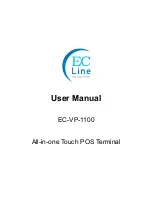
I/O Terminal /
MOUNTING AND WIRING
18
3.4.1 Power Contacts Supply (Up)
The bottom six connections with spring-loaded terminals can be used to feed the supply for the
peripherals. The spring-loaded terminals are joined in pairs to a power contact. The feed for the
power contacts has no connection to the voltage supply for the Bus Coupler / Bus Terminal
Controller.
The spring-loaded terminals are designed for wires with cross-sections between 0.08 mm² and
2.5 mm².
The assignment in pairs and the electrical connection between feed terminal contacts allows the
connection wires to be looped through to various terminal points. The current drawn from the
power contact must not exceed 10 A for long periods. The current carrying capacity between two
spring-loaded terminals is identical to that of the connecting wires.
3.4.2 Power Contacts
On the right hand face of the Bus Coupler / Bus Terminal Controller there are three spring
contacts for the power contact connections. The spring contacts are hidden in slots so that they
can not be accidentally touched. By attaching a Bus Terminal the blade contacts on the left hand
side of the Bus Terminal are connected to the spring contacts. The tongue and groove guides on
the top and bottom of the Bus Coupler / Bus Terminal Controller and of the Bus Terminals
enables that the power contacts mate securely.
3.4.3 Configuration and Programming Interface
The Bus Coupler / Bus Terminal Controller have an RS232 interface at the bottom of the front
face. The miniature connector can be joined to a PC IDE software with the aid of a connecting
cable. The interface permits the Bus Terminals to be configured, for example adjusting the
amplification factors of the analog channels. The interface can also be used to change the
assignments of the bus terminal data to the process image in the Bus Coupler. The functionality
of the configuration interface can also be reached via the fieldbus using string communication
facility.
















































